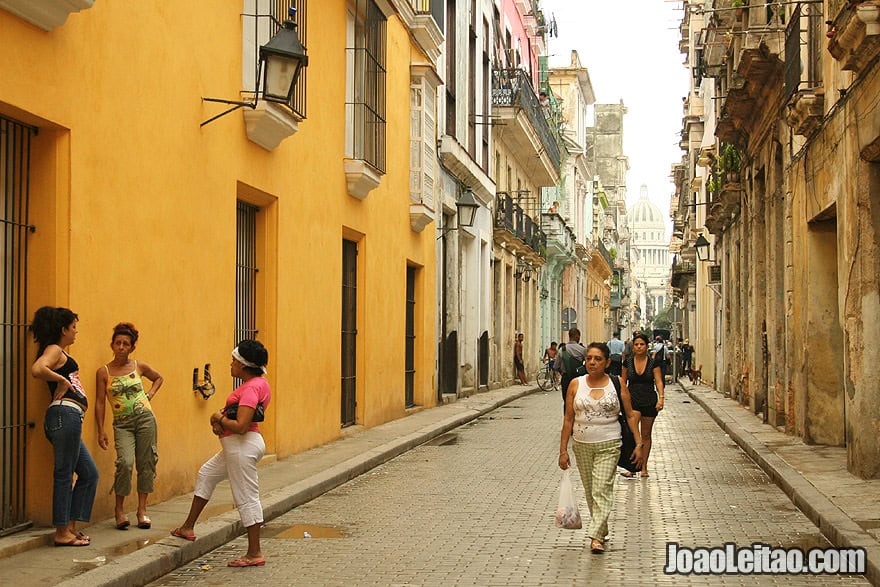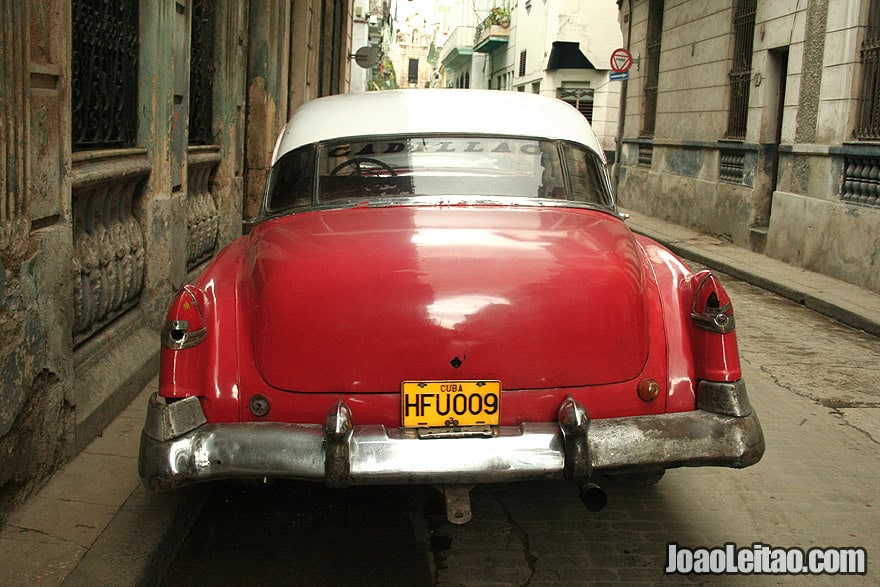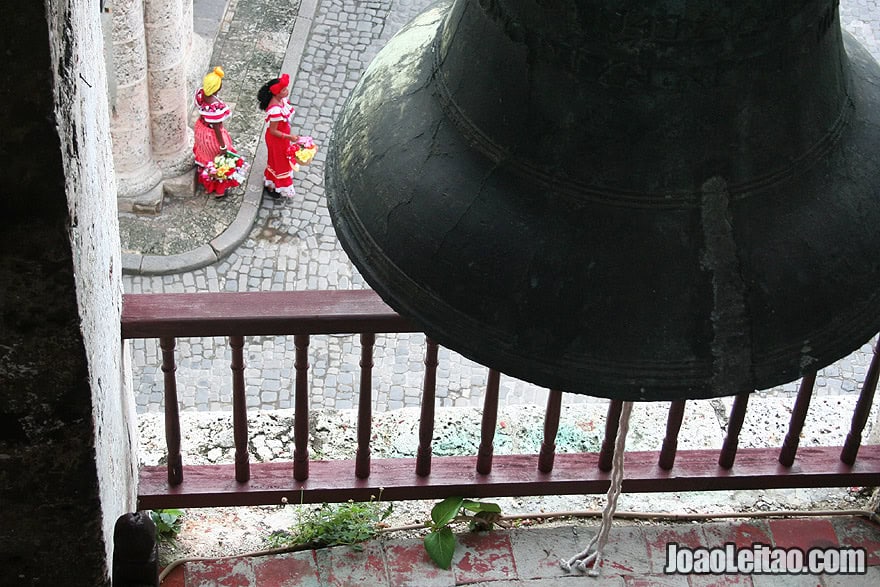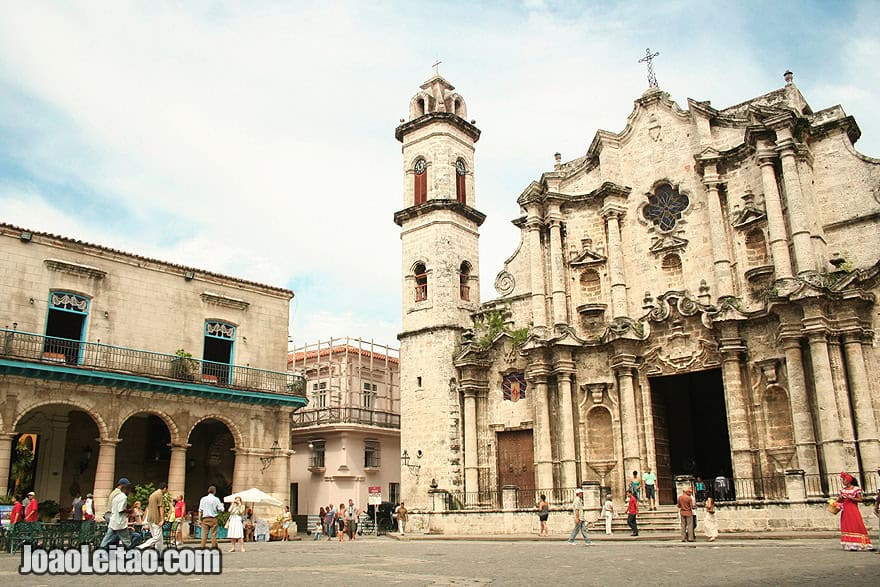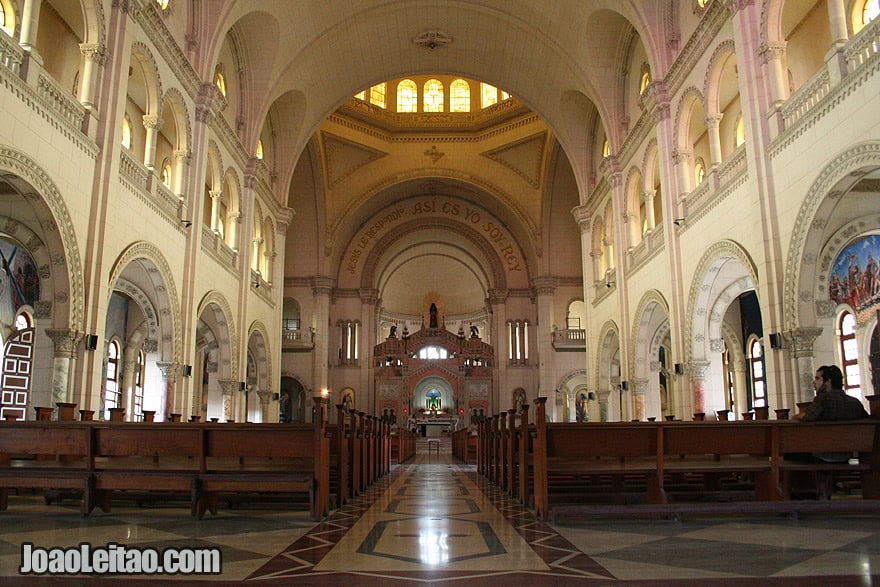Table of Contents
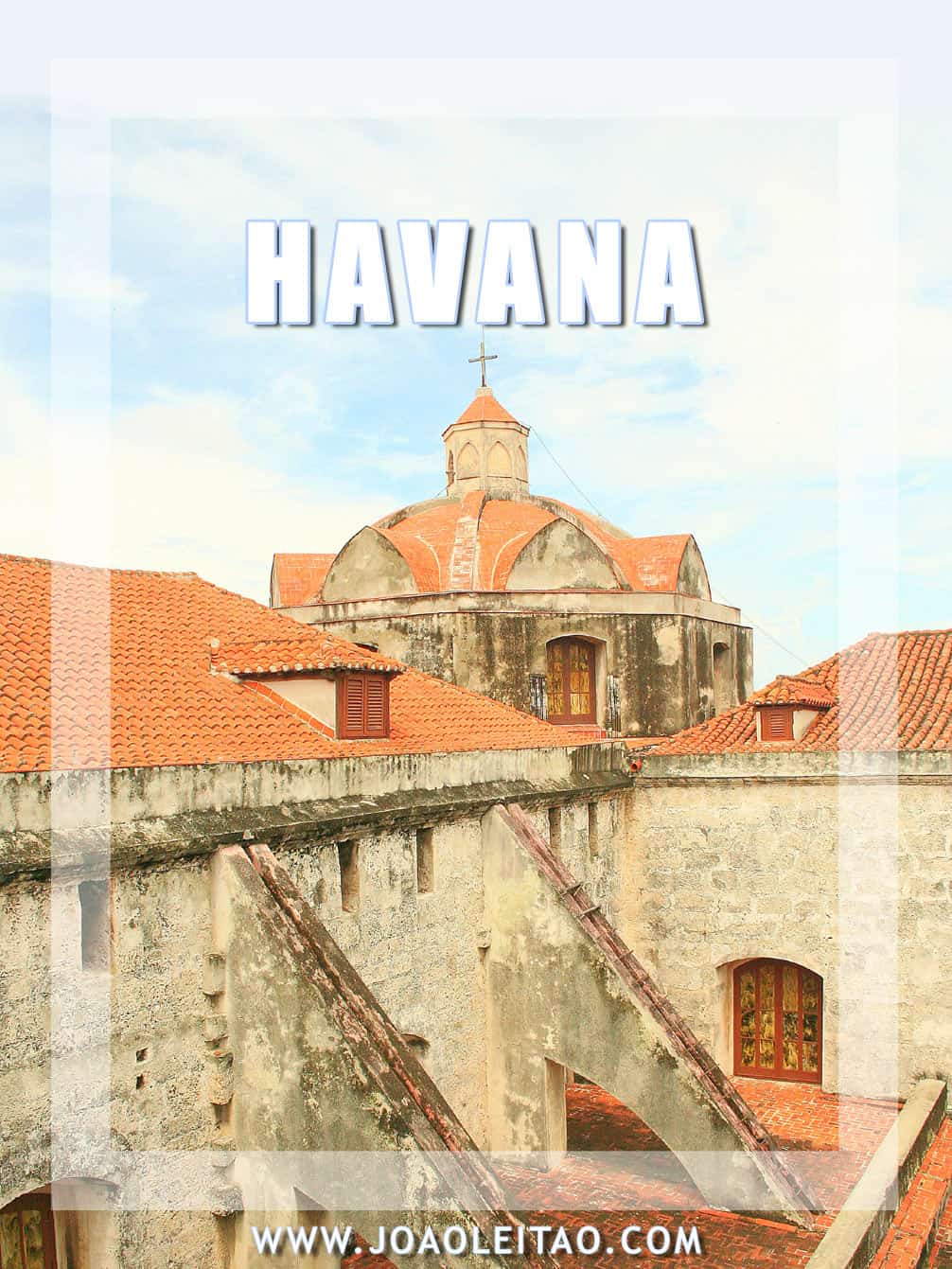
Havana is the capital of Cuba. A unique city, it’s the home of one of the kindest and most talkative people in the world, it’s full of historical heritage, and has a one-of-a-kind atmosphere that makes you want to celebrate and explore its most unknown spots. Even the crumbling buildings in its historic center are charming.
The historic center Habana Vieja and the forts that used to defend is one of the UNESCO Sites In Cuba since 1982, but the attractions of the city are much more than a group of classified heritage sites.
The surrounding neighborhoods are just as wonderful and a stroll down Malecon, the seaside avenue with the Caribbean Sea on one side and the old colonial-style buildings on the other are truly unforgettable.
You can’t visit Cuba without spending some time in Havana. If you don’t include this city in your itinerary, you’ll be missing out on a must-visit destination.
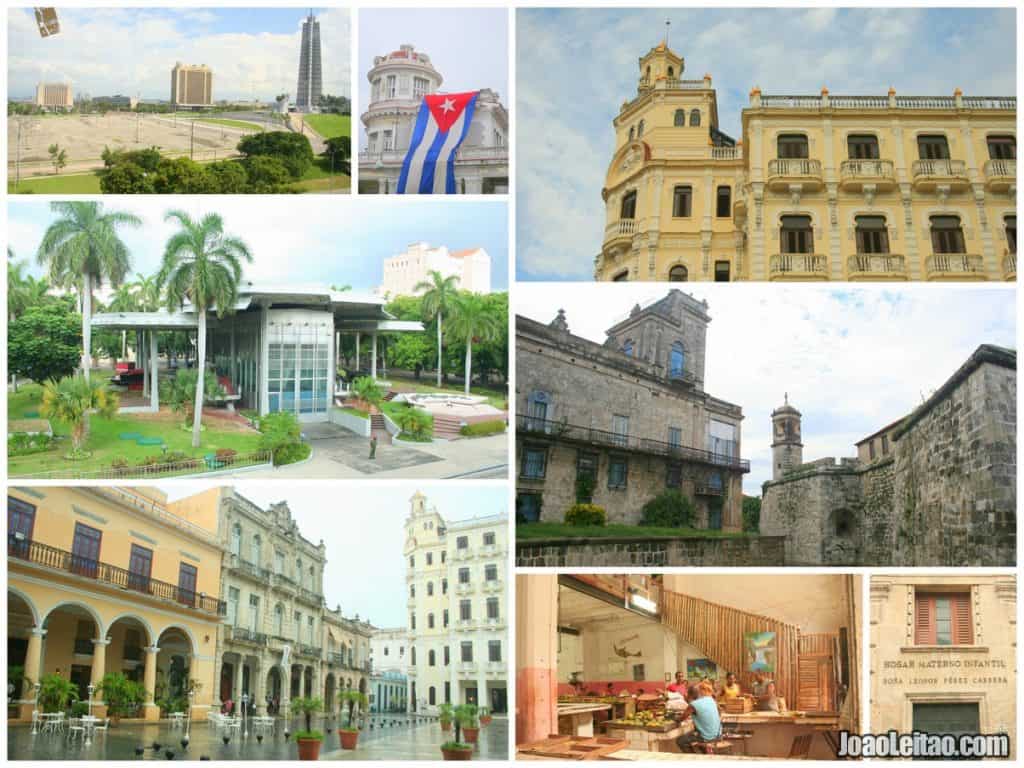
The Spanish colonization and the arrival of slaves from Africa in the 16th century make local culture in Havana a peculiar one. Both these groups influenced Cuban culture a lot and the mix is quite noticeable.
The city is one of the world’s richest cultural centers and offers tourists countless places worth visiting. The range of architectural styles you can see here is impressive and includes castles, cathedrals, museums, and spectacular manors. The unique music styles of salsa, rumba, and mambo were born from the combination of the Spanish language with African musical heritage.
When visiting Havana, you have to include all the must-sees in the city. Those include Paseo de Martí, Castillo de San Salvador de la Punta, Old Havana, the Havana Cathedral, and Castillo de la Real Fuerza. Havana is the largest city in the Caribbean and the capital of Cuba.
In addition to all this, beach-goers will love the 15 km of beaches with beautiful coral reefs. Don’t skip the Lenin Park in the city center that makes you feel like you’re surrounded by nature and at an urban spot at the same time.
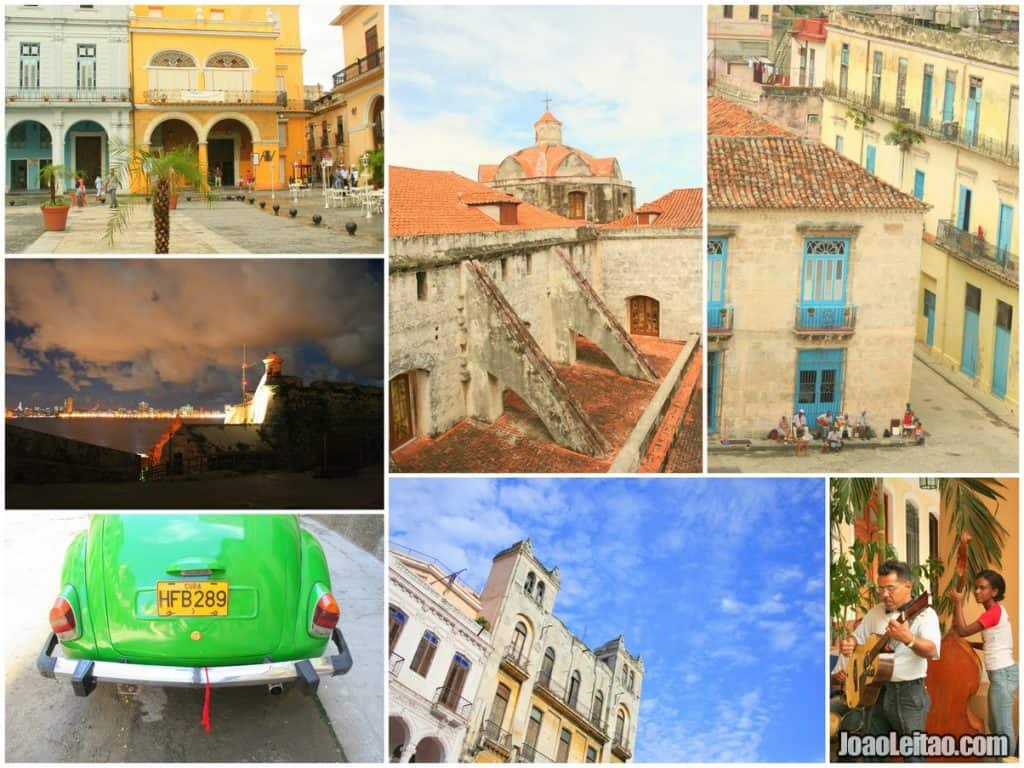
Havana is a very interesting city, a mix of tropical and colonial vibe. The old part of Havana is gorgeous, and this was the sixth city founded by the Spanish on the island. Expectedly, UNESCO classified the Old Havana (Havana Vieja) neighborhood as a World Heritage Site in Cuba. There are about 1,000 monuments of cultural interest in the city.
Culture in Cuba, and especially in the capital city, is a basic social need more important than health or education and Cubans celebrate it regularly. The taste for music, dancing, and theater is instilled in all Cuban citizens. Everywhere you look, you’ll see manifestations of Cuban culture, which is one of the reasons why artists from all over the world come here for inspiration.
Quick travel tips to visit Havana:
- Wake up early to be the first in monuments, museums, and other landmarks;
- Take a free walking tour;
- The sunset by the famous La Cabaña hill is gorgeous;
- Although it’s a tourist cliché, take a stroll on the Malecón (promenade) in Havana;
- To know when to go to Havana gather all information about the seasons and the local climate. The best time to visit Havana is between the warm season, from May to October, and the dry season, from November to April;
- Street food is incredibly cheap and you can have a full meal for under 1 Euro;
- After a day exploring the streets of Havana, you can watch the sunset from the bar outside the charming Hotel Nacional, with a gorgeous sea view, while drinking a pinã colada or a daiquiri;
- Paseo de Marti or Paseo del Prado, the avenue that goes all the way to Castillo de San Salvador de la Punta, is the main tourist area of the city;
- Every day at 9:00 pm you can attend the cannon ceremony, Ceremonia del Cañonazo, on the other side of Bay of Havana near the Fortificaciones y Armas museum and Plaza de Armas;
- Go up the San Carlos de la Cabaña fortress.
What to visit in Havana
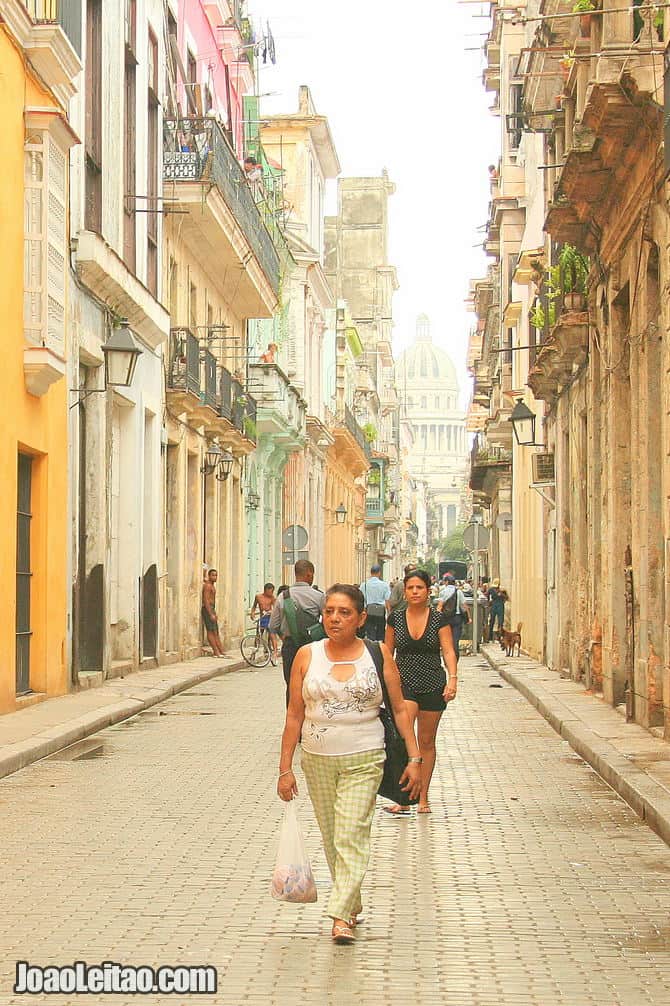
Most famous sites
- Old Havana and its fortifications
- Castillo del Morro (Morro Castle)
- National Capitol Building
- Castillo de la Real Fuerza
- National Museum of Fine Arts
- Havana Cathedral
- José Martí Memorial
- Fort San Salvador
- Christ of Havana
- Paseo del Prado
- La bodeguita del Medio
- Plaza Vieja (Old Square)
- Museum of Colonial Art
- Partagás Cigar Factory
- Havana Club Rum Museum
- Centro Gallego
- The Malecon
- San Lazaro Tower
- Cementerio Espada
- Great Theatre of Havana
- Plaza San Francisco de Asís
- Museum of the City
- El Templete
Map of attractions
Neighborhoods of Havana
Old Havana: it’s the historic center with the top things to see but also the more touristic area and, somewhat, inauthentic. Despite that, you can still see some quirky streets.
Center Havana: it’s a good option with fewer tourists and more picturesque. It’s in the area around Old Havana, alongside the coastline. I recommend you stay here at a house at the Malecon, for example.
Vedado: although it’s not exactly new, this part of the city is not within walking distance from the city center but it’s not that far geographically. It’s a more cosmopolitan area with more cultural events.
Tours in Havana
Havana City Guide
Castle of Royal Force
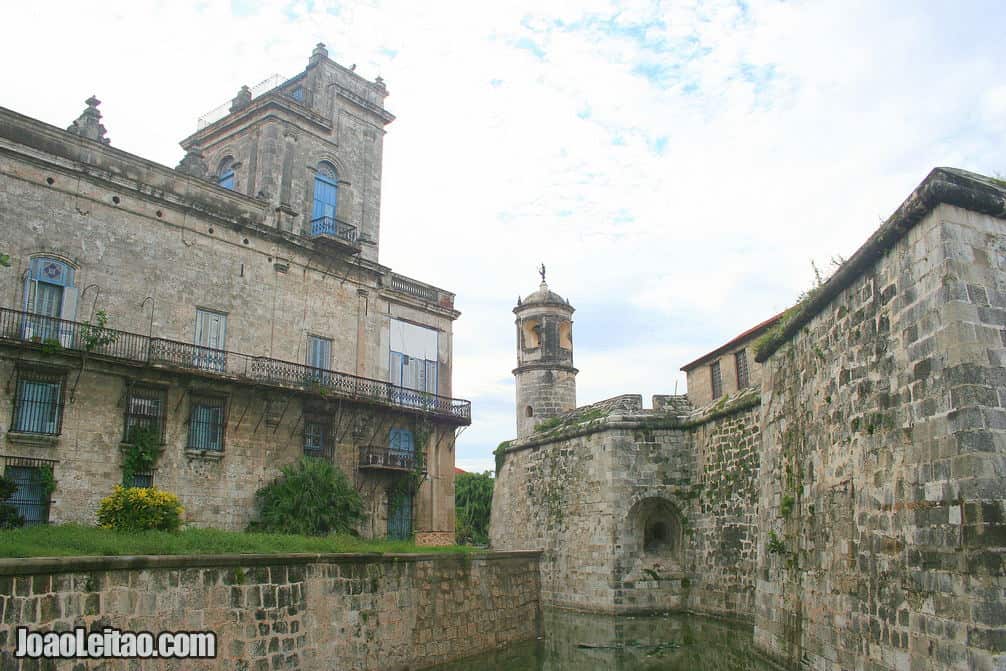
Castillo de la Fuerza Real (Castle of Royal Force) was built between 1558 and 1577 on top of a previous fortress that was severely damaged during an attack by French corsairs. It’s one of the oldest forts in America. Its four-point plan it’s typical of the Renaissance military engineering and it inherited some of the features of Spanish castles from the Middle Ages. Speaking in military terms, the building was a fiasco. It was too small to be practical and too far away from the Bay of Havana to prevent enemy ships from entering. Thus, it was used as the governor’s official residence, with several modifications over time. The National Archive was established here from 1899 onward, and the National Library from 1938 to 1957. After the 1959 Revolution, it became the headquarters of a department that supervised the museums, later there was an attempt to create a military museum, and finally, in 2010, it became the Maritime Museum.
Havana Cathedral
The Havana Cathedral is in the historic center of the city, at Cathedral Square, one of the most picturesque squares in the Cuban capital. The full name of the church in Spanish is La Catedral de la Virgen María de la Concepción Inmaculada de La Habana. It was finished in 1777 and the predominant style is Baroque with Tuscan influences. It has two bell towers, the one on the right is wider as is usual in typical Baroque religious buildings. The Jesuits were in charge of the construction, who, ironically, were ousted from the island by King Charles III ten years before the church was finished. The interior is richly decorated but the frescoes are copies from others you’ll find in Italian churches.
Castillo del Morro (Morro Castle)
Also known as Castillo de los Tres Reyes Magos del Morro, the Morro Castle was built in the mid-18th century and designed by Italian military architect Juan Bautista Antonelli. It was put to the test for the first time in a conflict in 1762, with extremely poor results. It was under siege and taken by the English. Nowadays, the castle is worth the visit not just to see the interior but also for the exhibitions like the one dedicated to the lighthouses of Cuba. If you don’t want to pay the admission fee or you are visiting outside of the opening hours, you can still visit the exterior and see some of the gorgeous views over Havana.
National Capitol Building
The National Capitol Building of Havana was built between 1926 and 1929 and housed the Cuban Congress until it was dissolved following the 1959 Cuban Revolution led by Fidel Castro. The Neo-Classical and Art Nouveau building was designed by Eugenio Rayneri Piedra and inspired by the Capitol in Washington, but the dome is based on the one at the Paris Pantheon. Inside you can visit the third largest statue inside of a building in the world, Italian Angelo Zanelli’s Statue of the Republic. For a long time, the Capitol was used as the headquarters of the Ministry of Science, Technology and Development but it’s being prepared to house the National Assembly of Cuba again.
Christ of Havana
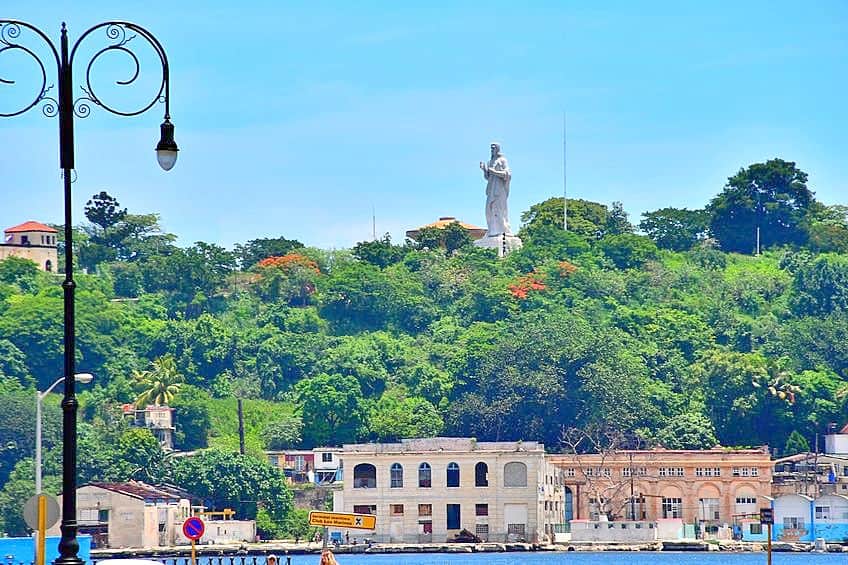
The statue of the Christ of Havana is at the top of La Cabaña hill, across the bay, near Casablanca. The statue was made by Cuban sculptor Jilma Madera and inaugurated on Christmas Eve of 1958. It’s made of white marble and 20 meters tall, placed on a pedestal with about 3 meters. She used 67 blocks of marble imported from Italy, which were blessed by Pope Pius XII. Fifteen days after the statue’s inauguration, Fidel Castro marched into Havana leading his revolutionary army. To visit the statue, take the ferry across the bay from Havana to Casablanca.
Paseo del Prado
Paseo del Prado, also known by its new name Paseo de Martí, begins near the Capitol building and stretches alongside the sea in front of the San Salvador de la Punta Castle. This street that works as the border between Centro Habana (Center Havana) and Habana Vieja (Old Havana) was originally designed in 1772 by Don Felipe Fonsdeviela y Ondeano. In 1925 it was redesigned by French Jean-Claude Nicolas Forestier to include the trees and marble benches you can see there today. Magnificent buildings flank the avenue, some of them quite neglected while others are well-preserved like Hotel Sevilla. Wealthy and privileged people began to move from here to other neighborhoods like Miramar or Vedado long before Castro’s Cuban Revolution.
La Bodeguita del Medio
La Bodeguita del Medio is a historic bar and restaurant in Cuba. There was a small grocery store here called Bodega La Complaciente and the owner, Ángel Martínez, began selling meals to his clients in 1942. One day, Leandro Garcia, a well-known Cuban journalist, decided to write his name on one of the walls and, of course, other customers followed suit. Over time, the small grocery store grew to become the bar you see today. Famous customers included Brigitte Bardot, Salvador Allende, Fidel Castro, and Ernest Hemingway who loved coming here for the mojitos and who made this place famous. La Bodeguita del Medio allegedly created those mojitos. And where did the name officially adopted in 1950 come from? Felito Ayon, an influential editor in Havana, accidentally named it because that’s how he described the place to friends asking for directions. La Bodeguita del Media means the store in the middle in English. Nowadays it is mostly a tourist trap where you won’t likely find a genuine Cuban.
Plaza Vieja (Old Square)
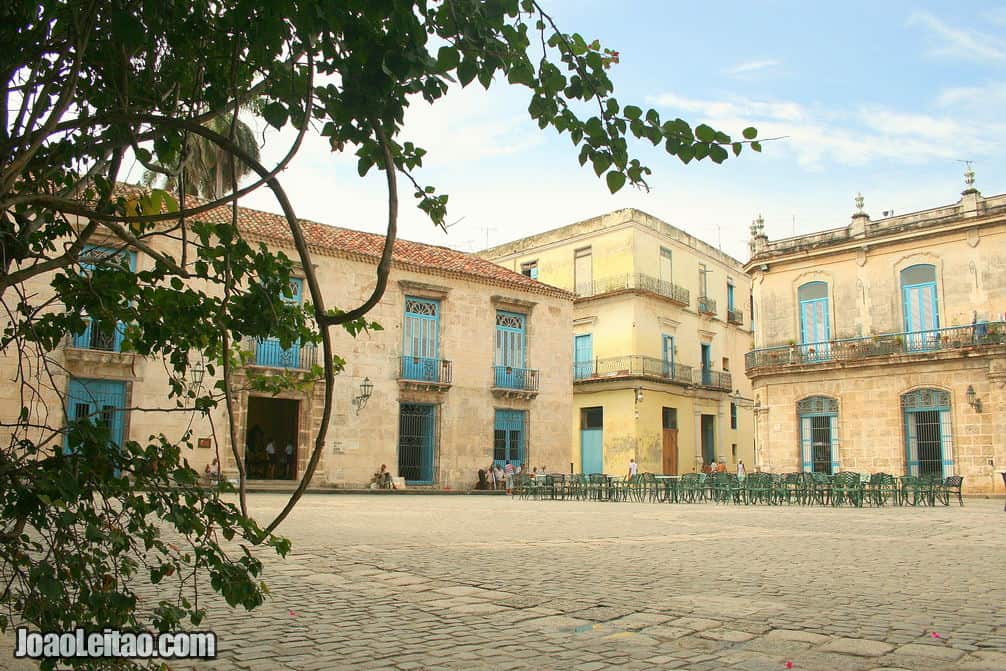
The Old Square competes with the Cathedral Square for the tile of central meeting point in Old Havana, but this one is larger and livelier. Ironically, it was called New Square when it was built in 1759. But new became old and it’s now a square lined with widespread architectural heritage. In the 18th century, an important market took place here and the square was called Plaza del Mercado (Market Square). After a new market was built at Plaza del Cristo in 1814, it began to be known as Old Square. It was a venue for bullfights, public executions, and selling slaves. Nowadays it’s a mix of a tourist spot, with high-priced bars and restaurants catering to foreigners, and a local hang out. Most of the buildings around the square are historical, housing museums and other cultural institutions. All of them have been restored and include a short historical explanation.
Real Fabrica de Tabacos Partagás (Partagás Cigar Factory)
Cigars are one of the most popular products in Havana and tourists always enjoy visiting a factory of “puros” (pure in Spanish, which designates a cigar made with tobacco from only one country). The Real Fabrica de Tabacos Partagás is the most iconic and most visited by tourists, located in the center of Havana near the Capitol. The factory was founded in 1845 by Spanish Jaime Partagás, who died shortly after and passed on the company to Ramon Cifuentes, who focused on growing the company. In the 20th century, the building was expanded with a second floor and warehouses. Nowadays it employs 400 people who roll tobacco leaves for 12-hour shifts to make the famous Cohiba and Montecristo cigars. You can visit the factory and the tour in English costs 10 Euros.
The Malecon
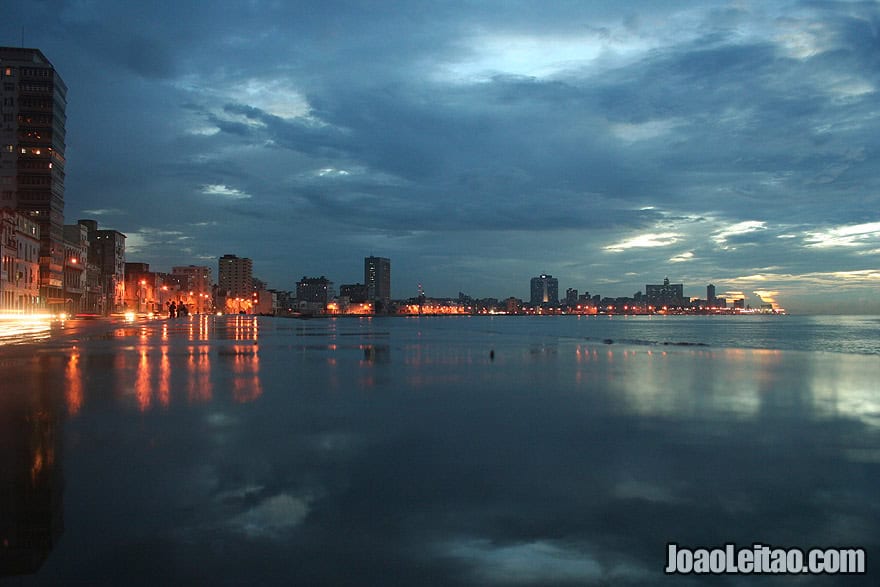
The Malecon, which means “seaside avenue” in Spanish, starts near the San Salvador de la Punta Castle, alongside the Caribbean Sea for about 8 km. Its construction began in 1901 when the USA administered the island, and you can see a plaque marking the occasion at the beginning of the avenue. It’s the place where locals go to for sports, fishing, dating, play some music, or just relax. It’s a social gathering place where you go to meet locals who are always ready to chat. Beware of the ocean, though. When the sea is rough, waves are big enough to reach the buildings on the other side of the six-lane avenue.

